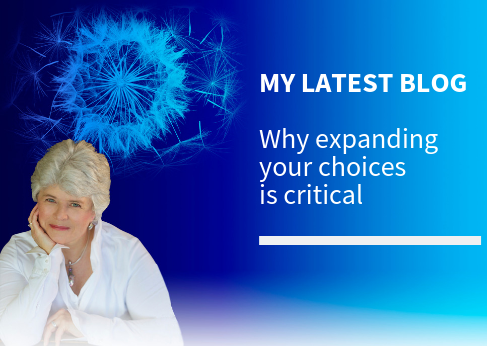
Why expanding your choices is critical
Why is it so important that we expand our choices when we’re dealing with today’s complexity? Typically, when faced with any situation, we go to our usual drawers to look for the levers or approaches that we know and understand, the things that make sense and that we’re comfortable with. However, if we want to create new futures, yet draw on the easy or obvious choices, that won’t necessarily create new opportunities, or lead to the outcomes that we hope for and need to achieve. If we reach for the familiar, we’re actually not creating anything new. We’re in a repeat loop.
Underpinning our go-to choices are the assumptions that we typically make about how things are linked together and the effects of their interactions. These assumptions are based on our experience and our logic. However, from a systemic perspective, there are a lot of invisible links between things; we know from systemic work there’s so much more information available than meets the eye. Bringing this to the surface leads to expanded choices – to perceive greater opportunities, and to help make better decisions.
Let me give you an example. Recently I was asked to do a piece of work with a pension fund that was facing a particularly difficult business issue. The regulator had changed the way in which they operate. The fund had gone to all the usual, highly regarded professional services firm to get advice, and every single thing they tried didn’t work. As a long shot, they decided to undertake a systemic piece of work. We set up the issue, and looked at the whole system, and we revealed perspectives that they couldn’t see before. Now, here’s the interesting thing: It wasn’t that we revealed anything that they didn’t already know, but what we revealed was the difference in the relationship between the things that they knew. Connections became visible, that changed the emphasis. When they saw this, it became clear to them what they needed to do, and how they needed to resolve their dilemma. With this profound clarity, which showed that they’d been approaching the issue from the wrong angle. Now they had expanded perspectives, which meant they went from feeling like they had no choices, to actually having multiple choices. It meant that they could make choices to optimise the business opportunity, rather than just survive their difficulty. The expanded perspective gave the business leverage. They got out of what seemed to be an intractable situation that they couldn’t resolve, to a very clear pathway forward for their business.
This example beautifully illustrates that expanding choices allows us to move from a tight, constrained position to an open, expansive position. If we feel tight and constrained, there’s a certain amount of angst in that, and we don’t make our best decisions from a position of angst. When it’s expanded and open, there’s a lot of freedom and a lot of choice – that’s when we actually make our best decisions.
In doing systemic work, it not only reveals insights that lead to expanded choices, but also allows us to test those choices and their impact on the system. We can test, ‘If I went here, what would happen to the system? If I went there, what would happen to the system?’ And we get a systemic response – so it means not only expanded choices but means by which to clarify how to make those choices as well.
Written by Sarah Cornally
Strategic Leadership Advisor
Cornally Enterprises Pty Ltd
PO Box 4413, Castlecrag NSW 2068 Australia
Fax +61 2 9475 0254









